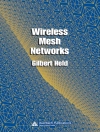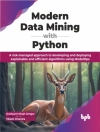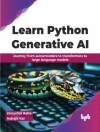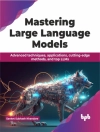This book provides theoretical background and state-of-the-art findings in artificial intelligence and cybersecurity for industry 4.0 and helps in implementing AI-based cybersecurity applications. Machine learning-based security approaches are vulnerable to poison datasets which can be caused by a legitimate defender’s misclassification or attackers aiming to evade detection by contaminating the training data set. There also exist gaps between the test environment and the real world. Therefore, it is critical to check the potentials and limitations of AI-based security technologies in terms of metrics such as security, performance, cost, time, and consider how to incorporate them into the real world by addressing the gaps appropriately. This book focuses on state-of-the-art findings from both academia and industry in big data security relevant sciences, technologies, and applications.
Tabela de Conteúdo
Introduction to Artificial Intelligence and Cyber Security for Industry.- Role of AI and its impact on the development of cyber security applications.- AI and Io T in Manufacturing and related Security Perspectives for Industry 4.0.- Io T Security Vulnerabilities and Defensive Measures in Industry 4.0.- Adopting Artificial Intelligence in ITIL for Information Security Management – Way forward in Industry 4.0.- Intelligent Autonomous Drones in Industry 4.0.- A review on automatic generation of attack trees and its application to automotive cybersecurity.- Malware Analysis using Machine Learning Tools and Techniques in IT Industry.- USE OF MACHINE LEARNING IN FORENSICS AND COMPUTER SECURITY.- Control of feed drives in CNC machine tools using artificial immune adaptive strategy.- Efficient Anomaly Detection for Empowering Cyber Security by Using Adaptive Deep Learning Model.- Intrusion Detection in Io T based Healthcare Using ML and DL approaches: A Case Study.- War Strategy Algorithm based GAN model for Detecting the Malware Attacks in Modern Digital Age.- ML algorithms for providing financial security in banking sectors with the prediction of loan risks.- Machine Learning based DDo S Attack Detection using Support Vector Machine.- Artificial Intelligence based Cyber Security Applications.
Sobre o autor
Dr. Velliangiri Sarveshwaran obtained his bachelor’s degree in computer science and engineering from Anna University, Chennai. Master in Computer Science and Engineering from Karpagam University, Coimbatore, and Doctor of Philosophy in Information and Communication Engineering from Anna University, Chennai. Currently, he is working as an assistant professor at the SRM Institute of Science and Technology, Kattankulathur Campus, Chennai. He was a member of the Institute of Electrical and Electronics Engineers (IEEE) and the International Association of Engineers (IAENG). He was the reviewer of IEEE Transactions, Elsevier, Springer, Inderscience, and other reputed Scopus-indexed journals. He is specialized in network security and optimization techniques. He published in more than 30 international journals and presented at more than 10 international conferences. He also serves as a technical program committee chair and conference chair at many international conferences. He also serves as an area editor for the EAI Endorsed Journal of Energy Web and an academic editor in the Journal of Wireless Communication and Mobile Computing.
Joy Iong-Zong Chen was born in Taichung Taiwan. He received his B.Sc., degrees in Electronics Engineering from the National Taiwan Technical University, Taipei, Taiwan, and M.Sc., degrees in Electrical Engineering from the Dayeh University, Chunghua, Taiwan, in 1985 and 1995, respectively, and Ph.D. degrees in Electrical Engineering from the National Defense University, Tao-Yuan, Taiwan, in 2001. He is currently a full professor at the Department of Communication Engineering at Dayeh University in Changhua Taiwan. Before joining Dayeh University, he worked as a Technical Manager at the Control Data Company (Taiwan branch) from Sep. 1985 to Sep. 1996. His research interests include wireless communications, spread spectrum technical, MIMO systems, OFDM systems, and wireless sensor networks.Dr. Joy I.-Z. Chen has published a large number of SCI/EI Journal papers on the issues addressed by the physical layer for wireless communication systems. Moreover, he also majors in developing some applications of the IOT (Internet of Things) techniques and Dr. Joy I.-Z.Chen owned some patents authorized by the Taiwan Intellectual Property Office (TIPO). Dr Joy I.-Z. Chen has ever been serving as many important positions in International Conferences.
Danilo Pelusi received a Ph D in Computational Astrophysics from the University of Teramo, Italy. He is an Associate Professor at the Department of Communication Sciences, University of Teramo. Editor of books in Springer and Elsevier, he is/was an Associate Editor of IEEE Transactions on Emerging Topics in Computational Intelligence, IEEE Access and International Journal of Machine Learning and Cybernetics. Guest editor for Elsevier, Springer and Inderscience journals and keynote speaker in several IEEEconferences, he belongs to the editorial board member of many journals. His research interests include Fuzzy Logic, Neural Networks, Information Theory, Machine Learning and Evolutionary Algorithms. Dr Danilo Pelusi is an editor of Neuroscience Informatics.












